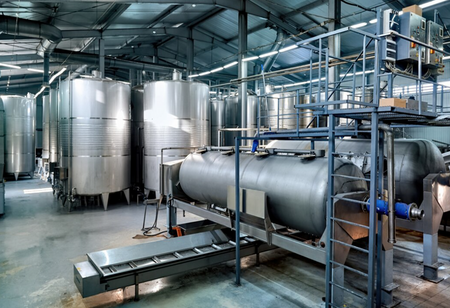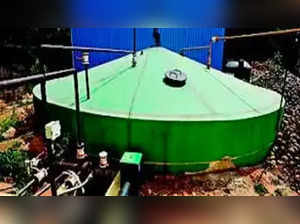Govt makes biogas blending mandatory

Govt makes biogas blending mandatory
The government’s announcement on Saturday represents a significant step toward promoting sustainable energy practices and reducing reliance on imports. The decision to implement compulsory blending of compressed biogas (CBG) in natural gas is aimed at utilizing resources derived from municipal and agricultural waste, contributing to environmental conservation and decreasing dependency on traditional energy sources.
Starting from April 2025, a 1 percent blending of biogas in natural gas used for automobiles and household kitchens will be mandated. This initial step is seen as a foundational move, with plans to increase the blending share to approximately 5 percent by 2028. This phased approach allows for a gradual integration of biogas into the existing energy infrastructure, ensuring a smooth transition and wider adoption over time.
In addition to the blending in household and automotive use, the government is also setting targets for sustainable aviation fuel (SAF). The plan is to introduce 1 percent SAF in aircraft turbine fuel by 2027, with an increase to 2 percent by 2028. Notably, these SAF targets will initially apply to international flights, aligning with global efforts to reduce the carbon footprint of the aviation industry.
The overarching goal of achieving net-zero emissions by 2070 is reflected in these measures. The blending obligation is a strategic move to stimulate both the production and consumption of compressed biogas in the country, fostering a more sustainable energy landscape.

The utilization of biogas derived from organic waste not only addresses environmental concerns but also provides an avenue for waste management. By tapping into municipal and agricultural waste streams, the government aims to convert what would otherwise be considered as waste into a valuable resource, contributing to the circular economy and reducing the environmental impact of such waste.
As these initiatives unfold, it will be essential to monitor their implementation, including the development of infrastructure for biogas production, distribution, and blending facilities. Public awareness and acceptance, along with supportive policies, will play crucial roles in the successful adoption of these measures. The government’s commitment to sustainable practices in the energy sector signifies a forward-looking approach to addressing environmental challenges and promoting a greener, more resilient future.
The announcement of the Compressed Biogas (CBG) Blending Obligation (CBO) reflects a strategic and comprehensive approach to transforming India’s energy landscape, with key objectives aimed at sustainability, economic efficiency, and environmental responsibility.

Stimulating Demand for CBG in City Gas Distribution Sector: The introduction of mandatory blending of CBG in the city gas distribution sector actively promotes the use of biogas derived from organic waste. This aligns with the broader goal of transitioning to cleaner and more sustainable energy sources.
Import Substitution for Liquefied Natural Gas (LNG): The CBO seeks to reduce reliance on imported Liquefied Natural Gas (LNG) by incorporating CBG into the natural gas supply. This not only contributes to energy security but also has the potential to result in significant savings in foreign exchange.
Saving in Forex: The emphasis on reducing reliance on LNG imports translates into a tangible benefit of saving foreign exchange. By promoting the use of domestically produced CBG, the government aims to enhance economic self-sufficiency and stability.
Promoting Circular Economy: The inclusion of CBG derived from municipal and agricultural waste in the energy mix reflects a commitment to the circular economy. By converting waste into a valuable resource, the government is addressing environmental concerns and promoting a sustainable and circular approach to waste management.
Assisting in Achieving the Target of Net Zero Emission: The CBO is a crucial component of India’s broader strategy to achieve net-zero emissions by 2070. By integrating CBG into the energy sector, the government is taking proactive steps to reduce the carbon footprint and contribute to global efforts in combating climate change.
The government’s estimation that the CBO will encourage an investment of around Rs 37,500 crores and facilitate the establishment of 750 CBG projects by 2028-29 underscores the scale of the initiative. This financial commitment is indicative of the government’s recognition of the importance of sustainable energy practices and the potential economic benefits associated with the widespread adoption of CBG.
The decision to make CBG blending voluntary until the fiscal year 2024-2025 allows for a transitional period, providing stakeholders with time to adapt and invest in the necessary infrastructure. The subsequent mandatory blending obligation starting from the fiscal year 2025-26 signals a commitment to moving decisively toward a more sustainable and environmentally friendly energy future.
The detailed provisions outlined in the statement regarding the Compressed Biogas (CBG) Blending Obligation (CBO) and Sustainable Aviation Fuel (SAF/Bio-ATF) targets provide a clear roadmap for the gradual implementation of these sustainability measures.
Compressed Biogas (CBG) Blending Obligation (CBO):
The CBO will be implemented gradually, with blending obligations set at 1 percent, 3 percent, and 4 percent of total Compressed Natural Gas (CNG) and Piped Natural Gas (PNG) consumption for the fiscal years 2025-26, 2026-27, and 2027-28, respectively. From the fiscal year 2028-29 onward, the blending obligation will increase to 5 percent.
The monitoring and implementation of the blending mandate will be overseen by a Central Repository Body (CRB), which will operate based on operational guidelines. This centralized approach ensures effective oversight and coordination in achieving the specified blending percentages.
Sustainable Aviation Fuel (SAF/Bio-ATF):
The statement sets initial indicative blending percentage targets for Sustainable Aviation Fuel (SAF) in Aviation Turbine Fuel (ATF). For the year 2027, a 1 percent SAF indicative blending target is established, initially for international flights. This target is set to double to 2 percent in 2028, also initially for international flights.
The statement mentions that the indicative blending percentages are based on feedback received from stakeholders, taking into account the capacities of upcoming Sustainable Aviation Fuel plants in the country and projected ATF sales.
These detailed provisions demonstrate a thoughtful and phased approach to the integration of CBG and SAF in the energy sector. The phased implementation allows for a gradual transition, providing stakeholders with time to adapt, invest in necessary infrastructure, and address potential challenges.
The establishment of a Central Repository Body (CRB) for monitoring and implementation, along with consideration of stakeholder feedback, reflects a commitment to transparency, collaboration, and flexibility in the execution of these sustainability initiatives.
Overall, the outlined targets and mechanisms aim to strike a balance between setting ambitious goals for sustainable energy integration and allowing for a practical and achievable transition within the specified timelines. As these initiatives unfold, ongoing collaboration between the government, industry stakeholders, and the public will be crucial for their successful implementation and the realization of environmental and economic benefits.




